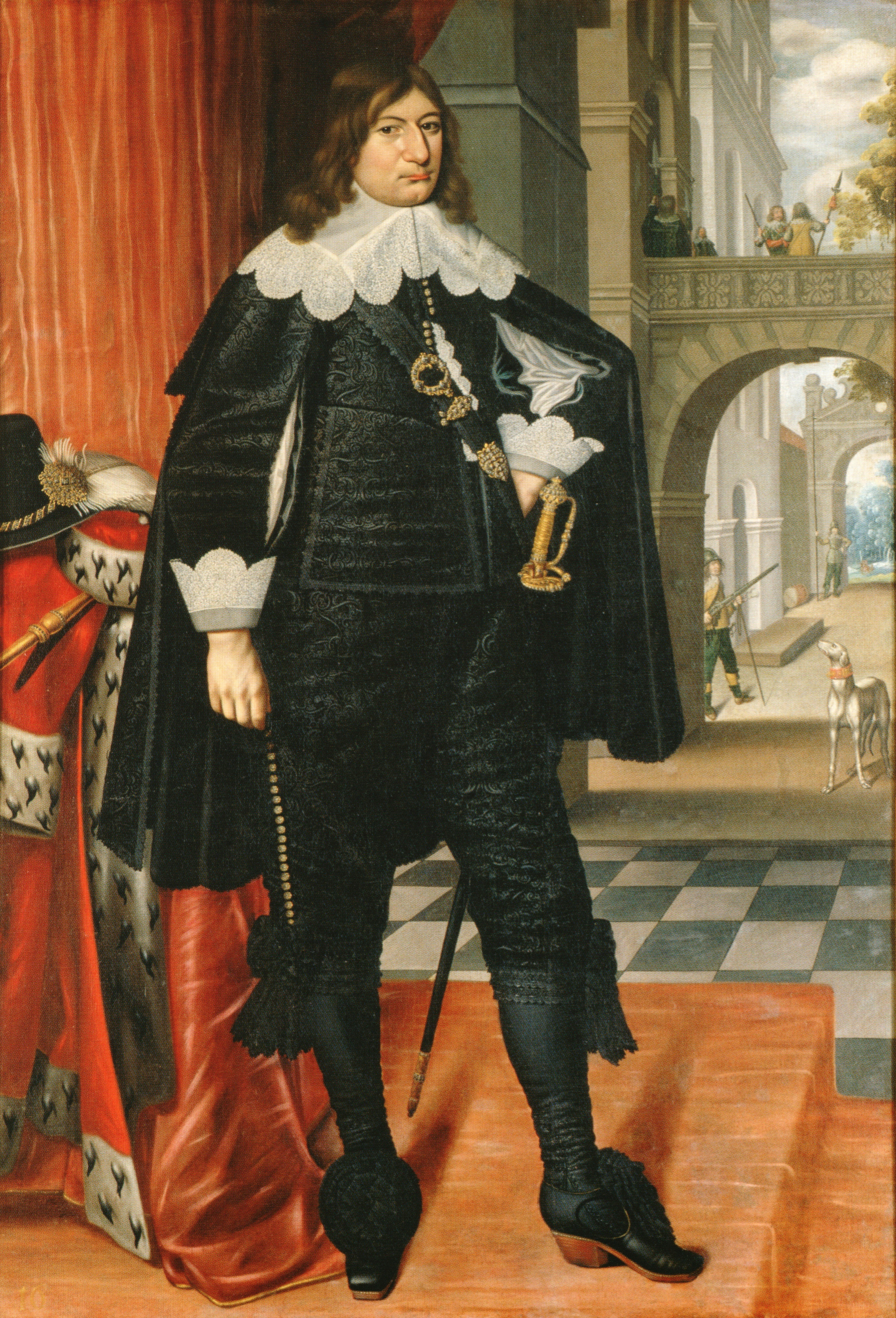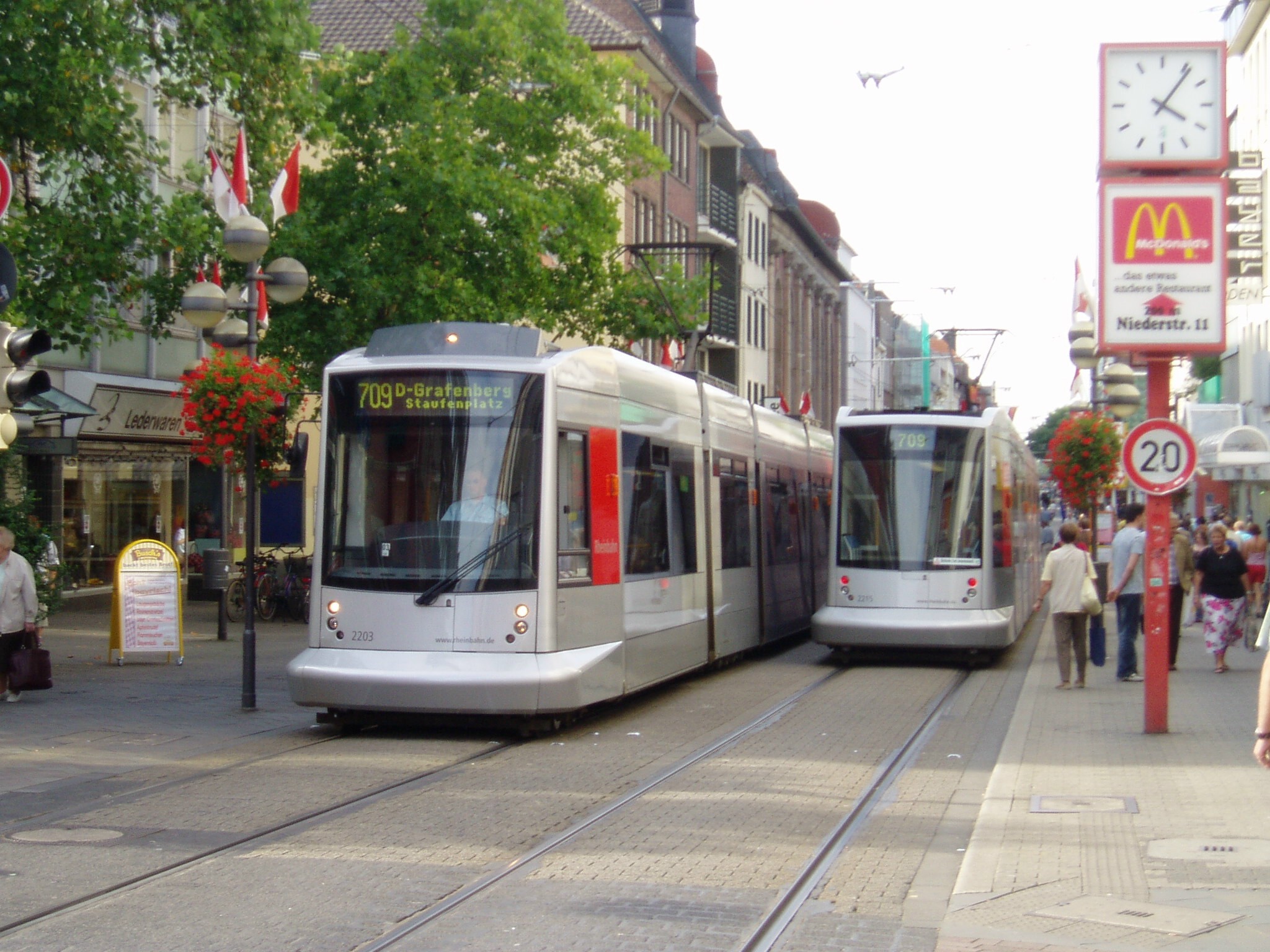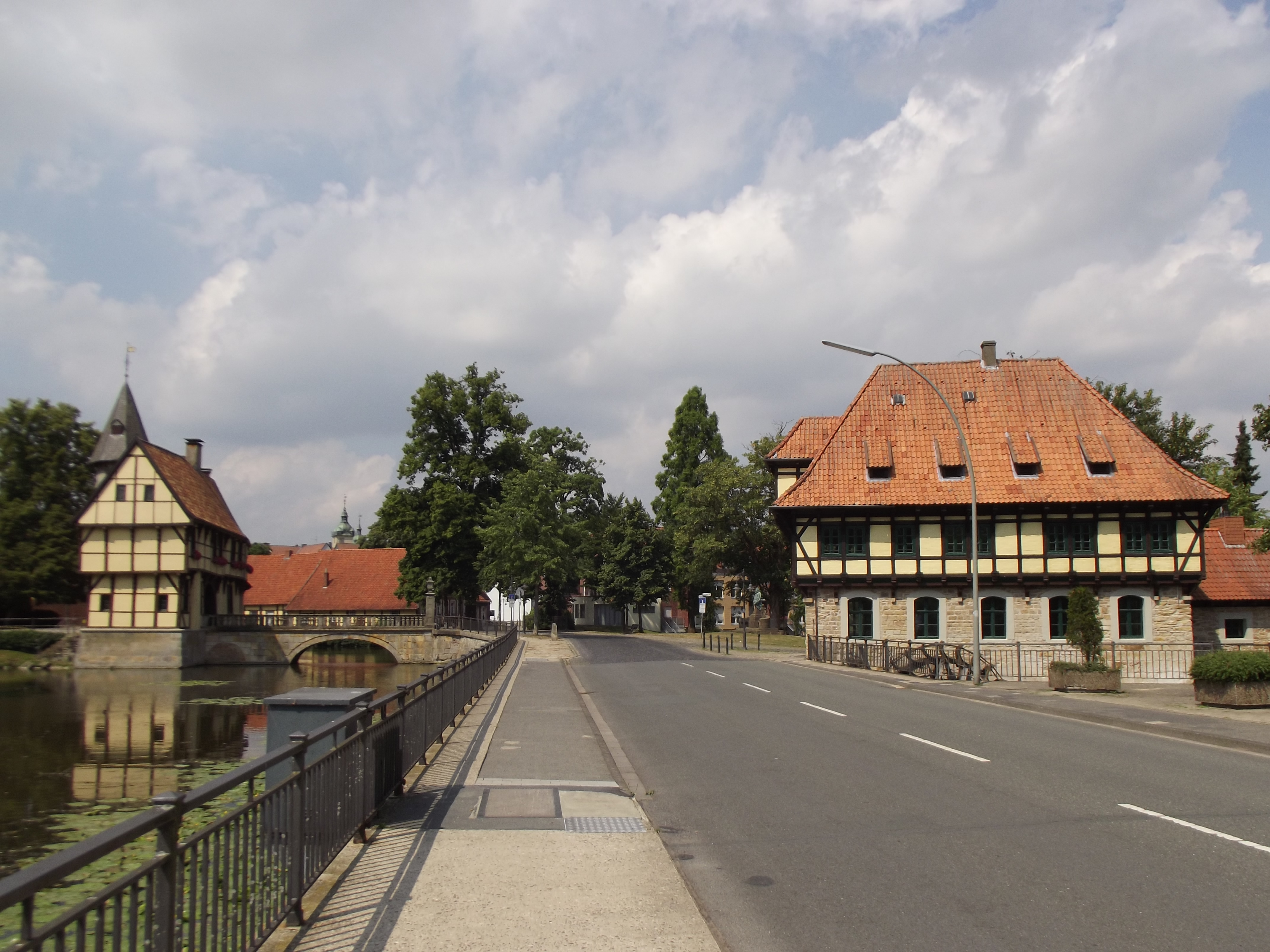|
Carl Von Rabenhaupt
Carl von Rabenhaupt (6 January 1602 – 12 August 1675) was a Bohemian Hussite nobleman who fought in Dutch and Hessian service during the Thirty Years War and came out of retirement to help the Dutch defend Groningen during the Franco-Dutch War. He made a name for himself as a siege specialist, taking or successfully defending many fortified cities along the Dutch-German border. Thirty Years War A Bohemian Hussite, Rabenhaupt went into exile for his religion in 1620, after the failure of the Bohemian Revolt, and entered military service. First, he fought at the defence of Bautzen under the Duke of Jägerndorf against the Elector of Saxony. By 1622 he had followed Ernst von Mansfeld into Dutch service. Taking part in the sieges of Bergen-op-Zoom, Groenlo and Maastricht in the Low Countries, he established his reputation in siege warfare. In 1633 he received an offer of service from William V, Landgrave of Hesse-Kassel. Transferring to Hessian service, he became governor of ... [...More Info...] [...Related Items...] OR: [Wikipedia] [Google] [Baidu] |
Bohemia
Bohemia ( ; cs, Čechy ; ; hsb, Čěska; szl, Czechy) is the westernmost and largest historical region of the Czech Republic. Bohemia can also refer to a wider area consisting of the historical Lands of the Bohemian Crown ruled by the Bohemian kings, including Moravia and Czech Silesia, in which case the smaller region is referred to as Bohemia proper as a means of distinction. Bohemia was a duchy of Great Moravia, later an independent principality, a kingdom in the Holy Roman Empire, and subsequently a part of the Habsburg monarchy and the Austrian Empire. After World War I and the establishment of an independent Czechoslovak state, the whole of Bohemia became a part of Czechoslovakia, defying claims of the German-speaking inhabitants that regions with German-speaking majority should be included in the Republic of German-Austria. Between 1938 and 1945, these border regions were joined to Nazi Germany as the Sudetenland. The remainder of Czech territory became the Second ... [...More Info...] [...Related Items...] OR: [Wikipedia] [Google] [Baidu] |
Ernst Von Mansfeld
Peter Ernst, Graf von Mansfeld (german: Peter Ernst Graf von Mansfeld; c. 158029 November 1626), or simply Ernst von Mansfeld, was a German military commander who, despite being a Catholic, fought for the Protestants during the early years of the Thirty Years' War. He was one of the leading mercenary generals of the war. Biography Mansfeld was an illegitimate son of Count Peter Ernst von Mansfeld (1517–1604), a member of the comital House of Mansfeld and royal Spanish stadtholder. He was raised in the Catholic faith at his father's palace in Luxembourg. He gained his earliest military experiences during the Long War in Hungary, where his elder half-brother Charles (1543–1595), also a soldier of renown, held a high command in the imperial army. While his brother succumbed to an epidemic within short time, young Ernst stayed at the theatre of war for several years. In the War of the Jülich Succession he served under Archduke Leopold V of Austria, until that prince's ingra ... [...More Info...] [...Related Items...] OR: [Wikipedia] [Google] [Baidu] |
Frederick William, Elector Of Brandenburg
Frederick William (german: Friedrich Wilhelm; 16 February 1620 – 29 April 1688) was Elector of Brandenburg and Duke of Prussia, thus ruler of Brandenburg-Prussia, from 1640 until his death in 1688. A member of the House of Hohenzollern, he is popularly known as "the Great Elector" (') because of his military and political achievements. Frederick William was a staunch pillar of the Calvinist faith, associated with the rising commercial class. He saw the importance of trade and promoted it vigorously. His shrewd domestic reforms gave Prussia a strong position in the post-Westphalian political order of north-central Europe, setting Prussia up for elevation from duchy to kingdom, achieved under his son and successor. Biography Elector Frederick William was born in Berlin to George William, Elector of Brandenburg, and Elisabeth Charlotte of the Palatinate. His inheritance consisted of the Margraviate of Brandenburg, the Duchy of Cleves, the County of Mark, and the Duchy of Pru ... [...More Info...] [...Related Items...] OR: [Wikipedia] [Google] [Baidu] |
Countess Amalie Elisabeth Of Hanau-Münzenberg
Amalie Elisabeth of Hanau-Münzenberg (28 January 1602–18 August 1651) was Landgravine consort and Regent of Hesse-Kassel. She married the future William V, Landgrave of Hesse-Kassel in 1619 and became Landgravine upon his ascension to power in 1627. In 1637, military defeats forced her and William V into exile in East Frisia. Later that year, she became regent for their son William VI upon her husband's death. Through skillful diplomacy and military successes in the Thirty Years' War, she advanced the fortunes of Hesse-Kassel and influenced the Peace of Westphalia that brought the conflict to an end. She handed over an enlarged landgraviate to her son when she abdicated upon his majority in 1650. However, her health had deteriorated over the course of the war, and she died soon after her abdication in 1651. Early life Amalie Elisabeth was born between 2 and 3 o'clock in the afternoon of 28 January 1602 to Philip Louis II, Count of Hanau-Münzenberg and Countess Catharina Belgic ... [...More Info...] [...Related Items...] OR: [Wikipedia] [Google] [Baidu] |
Xanten
Xanten (, Low Rhenish: ''Santen'') is a town in the state of North Rhine-Westphalia, Germany. It is located in the district of Wesel. Xanten is known for the Archaeological Park, one of the largest archaeological open air museums in the world, built at the site of the Roman settlements ''Colonia Ulpia Traiana''. Other attractions include the medieval town centre with Xanten Cathedral, many museums and large man-made lakes for various watersport activities. Xanten is visited by approximately one million tourists a year. Geography Xanten, the only German town whose name begins with ''X'', is made up of three boroughs (''Ortsteile''): ''Hochbruch'', ''Niederbruch'', and the ''town centre''. Other localities (''Bezirke'') belonging to the town of Xanten include ''Birten'', ''Lüttingen'', ''Marienbaum'', ''Vynen'', ''Obermörmter'', ''Wardt'', ''Mörmter'', ''Willich'', ''Beek'' and ''Ursel''. Parts of a nature reserve called ''Bislicher Insel'' are located in the municipality ... [...More Info...] [...Related Items...] OR: [Wikipedia] [Google] [Baidu] |
Neuss
Neuss (; spelled ''Neuß'' until 1968; li, Nüss ; la, Novaesium) is a city in North Rhine-Westphalia, Germany. It is located on the west bank of the Rhine opposite Düsseldorf. Neuss is the largest city within the Rhein-Kreis Neuss district. It is primarily known for its historic Roman sites, as well as the annual Neusser Bürger-Schützenfest. Neuss and Trier share the title of "Germany's oldest city"; and in 1984 Neuss celebrated the 2000th anniversary of its founding in 16 BCE. History Ancient Rome Neuss was founded by the Romans in 16 BC as a military fortification (''castrum'') with the current city to the north of the castrum, at the confluence of the rivers Rhine and Erft, with the name of Novaesium. Legio XVI Gallica ("Gallic 16th Legion") of the Roman army was stationed here in 43-70 AD. It was disbanded after surrendering during the Batavian rebellion (AD 70). Later a civil settlement was founded in the area of today's centre of the town during the 1st centur ... [...More Info...] [...Related Items...] OR: [Wikipedia] [Google] [Baidu] |
Eschweiler
Eschweiler (, Ripuarian: ) is a municipality in the district of Aachen in North Rhine-Westphalia in Germany on the river Inde, near the German-Belgian-Dutch border, and about east of Aachen and west of Cologne. History * Celts (first ore mining) and Romans (roads and villae rusticae). * 828 First mentioned by Einhard, the biographer of Charlemagne. * 1394 Coal mining first mentioned. * For some centuries part of the Duchy of Jülich. * 1678 Completely destroyed except one house and the valuable leather Pietà. * 1794 To France. * 1800 French municipal rights and capital of the Canton of Eschweiler in the French Département de la Roer. * 1816 To Prussia. The French Cantons of Burtscheid and Eschweiler are put together to form the Prussian Kreis Aachen. * 1838 Foundation of the first joint stock company in the then Kingdom of Prussia: Eschweiler Bergwerksverein (i.e. Eschweiler Coal Mining Company) EBV. * 1858 Prussian municipal rights. Its quarters Hehlrath, Kinzweil ... [...More Info...] [...Related Items...] OR: [Wikipedia] [Google] [Baidu] |
Duchy Of Lorraine
The Duchy of Lorraine (french: Lorraine ; german: Lothringen ), originally Upper Lorraine, was a duchy now included in the larger present-day region of Lorraine in northeastern France. Its capital was Nancy. It was founded in 959 following the division of Lotharingia into two separate duchies: Upper and Lower Lorraine, the westernmost parts of the Holy Roman Empire. The Lower duchy was quickly dismantled, while Upper Lorraine came to be known as simply the Duchy of Lorraine. The Duchy of Lorraine was coveted and briefly occupied by the dukes of Burgundy and the kings of France. In 1737, the duchy was given to Stanisław Leszczyński, the former king of Poland, who had lost his throne as a result of the War of the Polish Succession, with the understanding that it would fall to the French crown on his death. When Stanisław died on 23 February 1766, Lorraine was annexed by France and reorganized as a province. History Lotharingia Lorraine's predecessor, Lotharingia, was a ... [...More Info...] [...Related Items...] OR: [Wikipedia] [Google] [Baidu] |
Kalkar
Kalkar ( is a municipality in the district of Kleve, in North Rhine-Westphalia, Germany. It is located near the Rhine, approx. 10 km south-east of Cleves. The catholic church St. Nicolai has preserved one of the most significant sacral inventories from the late Middle Ages in Germany. History Kalkar was founded by Dirk VI of Cleves in 1230 and received city rights in 1242. It was one of the seven "capitals" of Cleves (called Kleve), until the line of the Duchy of Cleves died out in 1609, whereupon the city went over to the Margraviate of Brandenburg. Marie of Burgundy, Duchess of Cleves retired to Monreberg castle in Kalkar, where she founded a Dominican convent in 1455. Under her influence the city bloomed and artists were attracted to the favorable climate for cultural investment. She died at Monreberg castle in 1463. Air base The USAF 470TH Air Base Squadron supports the NATO Joint Air Power Competence Center (JAPCC) in Kalkar and the NATO CAOC in Uedem. The 470th is no ... [...More Info...] [...Related Items...] OR: [Wikipedia] [Google] [Baidu] |
Steinfurt
Steinfurt (; Westphalian: ''Stemmert'') is a city in North Rhine-Westphalia, Germany. It is the capital of the district of Steinfurt. From roughly 1100-1806, it was the capital of the County of Steinfurt. Geography Steinfurt is situated north-west of Münster, North Rhine-Westphalia. Its name came into being in 1975 when the two hitherto independent towns Borghorst and Burgsteinfurt amalgamated. Borghorst became a prosperous city due to its flourishing textile industry, whereas Burgsteinfurt has always rather been coined by culture and administration. Tourists of the 19th century passing Burgsteinfurt praised the city as the "Paradise of Westphalia" and "Royal Diamond" (''Königsdiamant'') because of its 75 monumental buildings and moated castle. Neighbouring municipalities Steinfurt borders Ochtrup, Wettringen, Neuenkirchen, Emsdetten, Nordwalde, Altenberge, Laer, Horstmar and Metelen. City division Steinfurt consists of ''Borghorst'' and ''Burgsteinfurt'', each with thre ... [...More Info...] [...Related Items...] OR: [Wikipedia] [Google] [Baidu] |
Bocholt, Germany
Bocholt () is a city in the north-west of North Rhine-Westphalia, Germany, part of the district Borken. It is situated 4 km (2½ miles) south of the border with the Netherlands. Suderwick is part of Bocholt and is situated at the border annex to Dinxperlo. Geography The northern border of the city of Bocholt is the German border with the Netherlands. Bocholt borders the district of Wesel, in the administrative region of Düsseldorf, in the southwest. Bocholt is bordered in the north by the Dutch municipalities of Aalten and Winterswijk, in the east by the city of Rhede, in the south by the city of Hamminkeln, and in the west by the city of Isselburg. The climate in the region of Bocholt and West Münsterland is temperate with distinct maritime influences, with very mild winters in comparison to other German regions because of the proximity to the ocean and the low elevation. Summers are moderately warm. The average temperature in January is 2.7 °C (37 °F) an ... [...More Info...] [...Related Items...] OR: [Wikipedia] [Google] [Baidu] |
Vreden
Vreden is a small town in North Rhine-Westphalia, Germany near the Dutch border. The town is located near the river Berkel. The first mentioning of the town is proven for the year 839. In 1252 Vreden obtained city rights. Demographics Religion * 90% Christian * 10% other Culture and sights Museums * Hamaland-Museum ** Farmer-Museum * Silhouette Museum * Miniature Shoe Museum * Skulpturenpark Erning * Heimathaus Noldes * Berkelkraftwerk * Biologische Station Zwillbrock Buildings * Former castle * Old townhall * Foundations of seven older churches under the current day St. Georg church * Baroque church in Zwillbrock * Stiftskirche (collegiate church of the former noble convent of Vreden) Parks *The "Zwillbrocker Venn": The Zwillbrocker Venn, approximately 10 km east of the city centre is part of a large nature reserve with numerous water areas. The Venn is home of Europe's largest black-headed gull breeding area and the world's northernmost flamingo breeding site. *Vreden ... [...More Info...] [...Related Items...] OR: [Wikipedia] [Google] [Baidu] |






